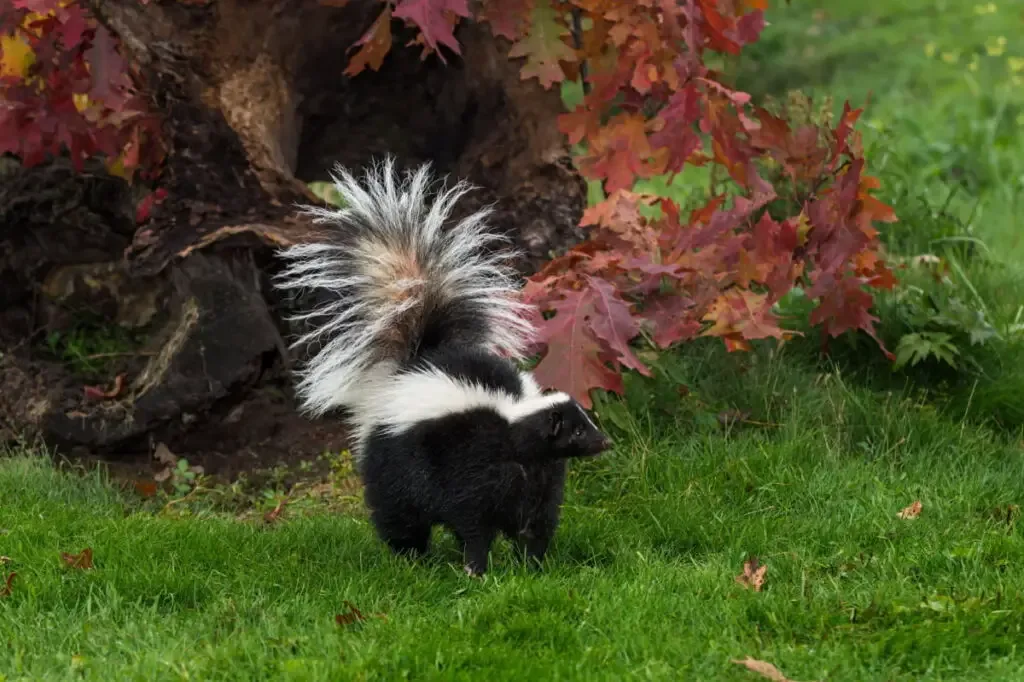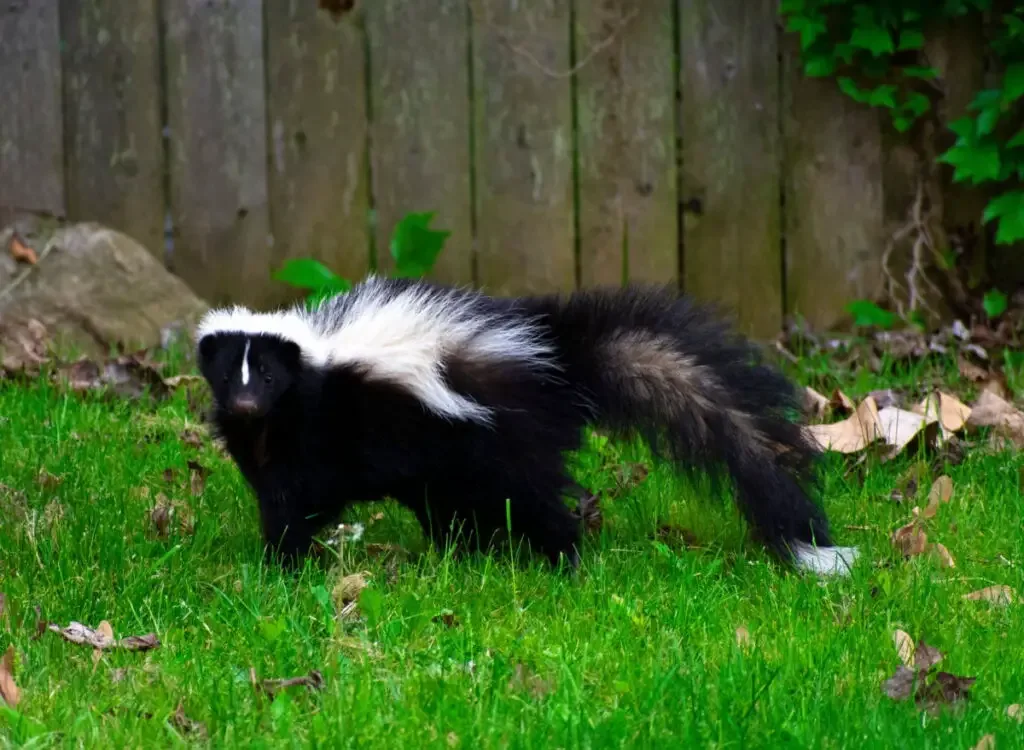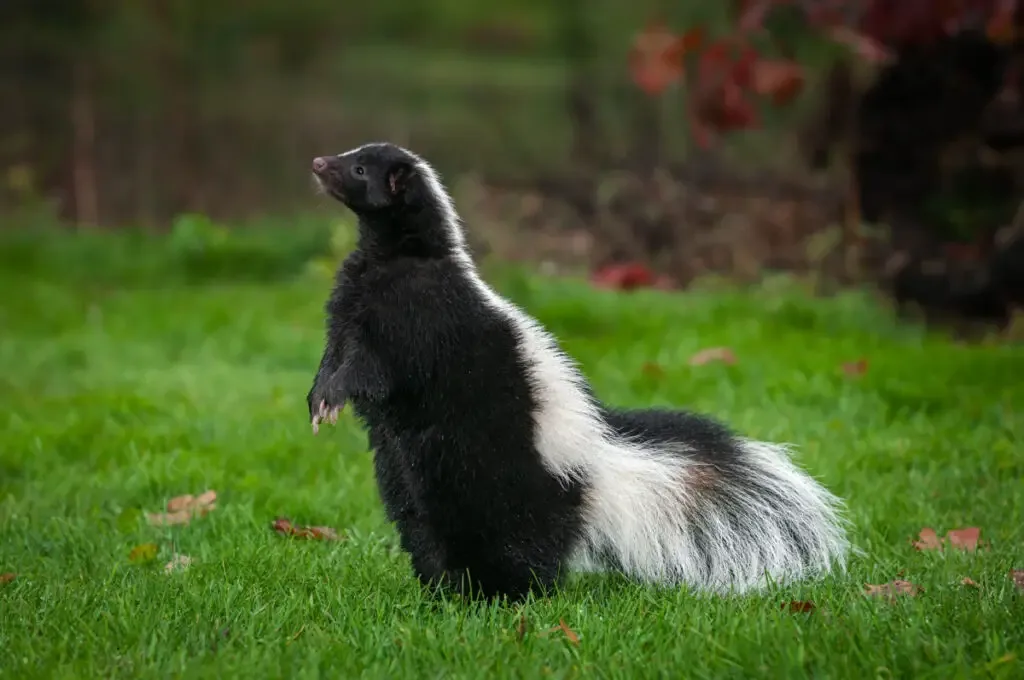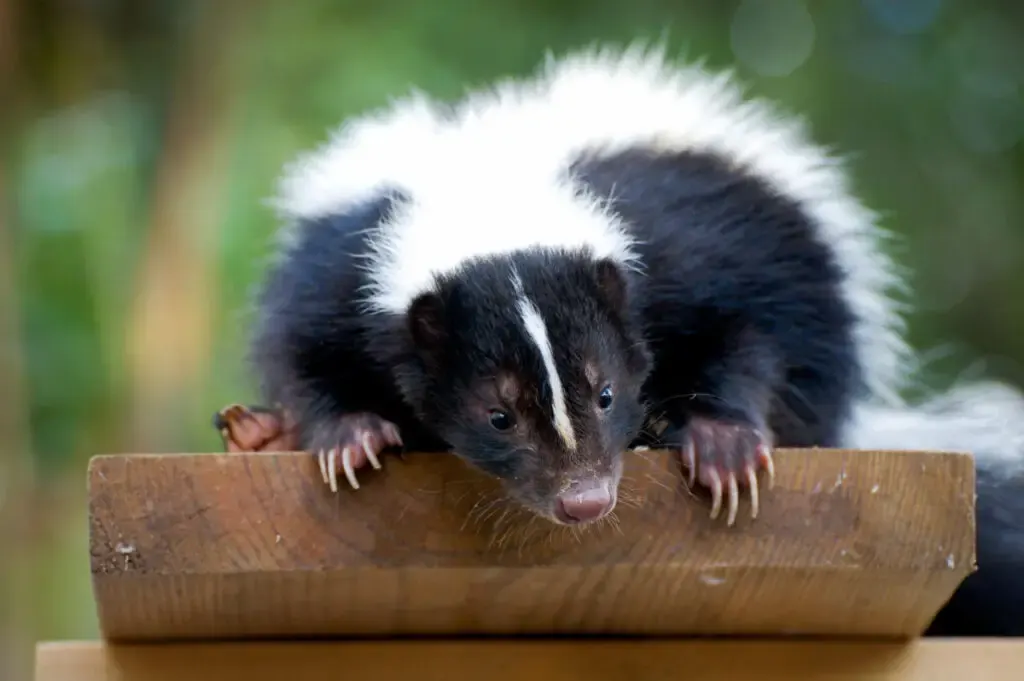Skunks are curious animals with a wide range of abilities. The good news with their presence in the garden is that they are the best natural pest control to fight against grubs, mice, crickets, rats, beetles, and other pests.
The bad news, however, is their odor, which is unmistakable no matter the location of the skunk.
You might have measures to keep them out of your garden but find that they keep coming back. How do they get back in? Can they climb the walls? What types of walls can skunks climb?
Can skunks climb brick walls?
We’ll answer these questions and give you some more information about skunks in the rest of this article.

Table of Contents
Can Skunks Climb Brick Walls?
Skunks can climb brick walls that are no more than 6 feet high.
However, not all skunk species are good climbers. The spotted skunk is an excellent climber, but the striped skunk is not very good at it.
In the wild, skunks often climb and jump about on trees. However, they are also good at burrowing, meaning that they will climb fences in rare situations.
Spotted skunks are good climbers because they have small, light, and flexible bodies with claws well adapted for enhanced climbing capabilities. They are particularly a nuisance because they can easily get into chimneys, attics, and even garbage cans.
The striped skunk, on the other hand, has a stocky body with features like tough claws and short, strong legs well adapted for digging through dirt and catching bugs and rodents.
This type of skunk lives in fields, pastures, and other open spaces where climbing is not a necessary skill to hunt.
How High Can Skunks Climb?
Depending on their agility, skunks can climb fences up to 6 feet high. The spotted skunk can climb easily up to such heights, but the striped species often find it hard to climb and prefer burrowing.

Can Skunks Climb a Chain Link Fence?
All skunks often find it easier to climb up wire fences like chain link fences because of the many gaps that provide positions for support as they climb. Compared to brick surfaces, chain links are not smooth, making it easy for the skunks to climb.
When climbing, skunks secure their limbs in the gaps between the chain links, and if they put in enough effort, they will climb however high they target. Although it can prove to be a difficult task, skunks will climb that high if they have to.
However, skunks are better adapted to digging than climbing, and they would rather dig their way in than climb.
If you wish to use a chain-link fence, therefore, you should consider installing fences that are bent in an L-shape at the base to prevent skunks from digging and entering the garden from beneath the fence.

Can Skunks Jump?
Skunks can jump. They have strong hind legs that may not be helpful in climbing but are very useful in helping them jump.
If they can’t find a way to dig through or climb your wall, they will try to jump over to get to the other side. Their strong hind legs enable them to jump heights of up to 3 feet, meaning that they can comfortably jump onto your deck, shelves, and any other surface high enough for them to reach.
Besides, skunks are known to hop on trees and use the extended branches to gain access into a fenced property by jumping in from the branches. Therefore, installing high fences might not be enough to keep the intruders away if you leave extended branches that lead into the property. Therefore, you should trim any tree branches that extend into your property or above the home, to make it effectively inaccessible through the air.
Lastly, you need to keep the fences of small farm animals like chickens high enough to avoid them from being accessible to skunks.
Other Ways Skunks Might Get Through Fences
Burrowing under the fence
Skunks are better adapted for burrowing and are excellent diggers. For this, they are more likely to burrow their way in under the fence than climb over.
Skunks have short and powerful legs with long nails that effectively help them in digging their way through the earth, up to 2 feet deep.
The poor climbers, especially the hooded, striped, and hog-nosed skunks are more likely to burrow than even attempt climbing a brick wall/fence.
In the case you find a skunk hole in your fence, what do you do? How do you block the skunk hole? For the first few days, use a rug soaked in a skunk repellent fluid to gradually scare the skunk away for about a week or more. When the skunk is no longer visiting your garden, you can use a metal sheet or chicken wire to seal off the opening.
Getting Through a Fence
Interestingly, skunks can squeeze through small openings in the fence. Adult skunks, for example, can squeeze themselves through a hole in the fence with a width of about 4-6 inches. Younger skunks can even fit through smaller openings. Four inches seems a small space, but somehow, skunks find a way to squeeze their bodies through.
If you don’t know how small 4 inches is, consider stretching out your palm. The space from the baseline of the palm to the section just relative to the knuckles is about 4 inches long and is enough for an adult skunk to squeeze through. Therefore, if you have openings in your fence that are 3 inches wide or more, skunks might comfortably squeeze through without having to jump, climb, or dig through.

Why Do Skunks Climb Fences?
Skunks are nocturnal, meaning that they sleep during the day and wander about during the night. When they go out, they go exploring for food and shelter.
They have a particular taste for garden pests such as mice, voles, yellow-jacket wasps, grasshoppers, spiders, weevils, slugs, hornworms, cutworms, grubs, and Japanese beetles, just to name a few, making them a natural pest control in any garden. For this reason, skunks will find a way to get through the fence to look for food.
If they locate a good source of food within your yard, then you will have frequent unpleasant visitors regularly unless you do something about it. Skunks will always find something to snack on whenever they visit your garden such as leaves, vegetables, and fruits.
At times, skunks might be forced to move into a property such as crawl spaces, shades, or basements, especially when they need to make nests to nurture their babies. This often happens in the spring and can extend to early summer. If you find yourself in such a situation, let the mama skunk be with her babies till they are old enough to move out.
It might be a frustrating experience to have a skunk living on your property, and this is one of the main reasons people want to keep them away from their property; to avoid them from building nests within.

How Do You Keep Skunks Away?
There are some really practical things you should do to keep skunks away like always closing garbage bins with tight-fitting lids, installing bright backyard lights and noisemakers, and applying natural repellents like citrus oil and hot pepper.
If skunks are becoming a real nuisance in your yard, there are a couple of other tips you can try to keep them away:
Rid possible den sites
These include rock and woodpiles within the yard, or any other debris, including junk cars, which have notoriously been a favorite spot for skunks in the past.
Feed pets inside
Besides the roaches and bugs that pet food attracts, skunks are also attracted for an easy meal. Therefore, it is recommended that you feed your pets indoors or, at the very least, collect the uneaten food and sweep off the remains before evening comes.
Eliminate bugs and rodents
Skunks might be attracted to your yard because they are attracted to the possibility of food that they can find around your property. If you cut off their food, bugs, and rodents, they might not see it necessary to continue coming.

Patch holes and lay the proper foundation
Since skunks are great diggers, you should consider burying the fencing material about 2 feet down to discourage them from digging. Before doing this, however, you need to be certain that all the skunks are out of the yard to avoid ending up with skunks stuck within the yard.
Use ammonia-soaked rags
The smell of mothballs and ammonia is known to scare away skunks, as it gives them an impression of a possible predator. Place these rags in any holes they may have dug or a space you think they are interested in building a nest.
Conclusion
Skunks can climb brick walls, but not all skunks are good climbers. If the brick wall is high enough, more than 6 feet, the skunks might not have the nerve for climbing and might look for other options to get into the property.
If they find a way in, first look for the possible entry points and apply the relative remedy as soon as possible.
Resources
- https://bikehike.org/can-skunks-climb-brick-walls/
- http://wildliferemovalusa.com/skunkclimb.html
- https://crittercleanout.com/can-skunks-climb-walls/
- https://www.orkincanada.ca/blog/do-skunks-climb/
- https://www.backyardpests.com/can-skunks-climb-a-fence/
- http://www.aaanimalcontrol.com/professional-trapper/skunkfenceclimb.html
- https://www.wildliferescueleague.org/animals/gardeners-best-friend-master-of-pest-control-the-skunk/
- https://www.terminix.com/skunks/prevention/

